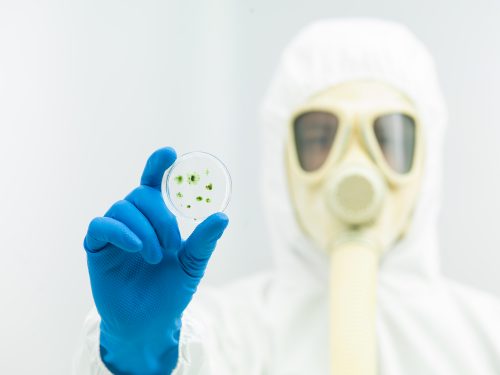Organisms that escape or are stolen from laboratories will self-destruct and prevent industrial espionage and environmental pollution / Jennifer Absey

An unimaginable amount of genetically modified Escherichia coli bacteria live in tanks around the world and produce useful things like medical insulin, plastic polymers and food additives. When the programmed creatures finish fulfilling their role, they are discarded as industrial waste or used as fertilizer.
Today, this arrangement does not pose a great risk to the environment, because engineered E. coli bacteria are weak creatures compared to their natural cousins, and will not survive for long outside the laboratory. But genetically modified bacteria that have not yet been invented may end up in unwanted places and create risks. What if, for example, an accident causes the spread of more resistant, engineered bacteria to take over a well-balanced ecosystem? Or if the genetically engineered bacteria will transfer unique properties, such as resistance to antibiotics, to their counterparts in the wild, with the help of horizontal genetic transfer? Or if a rival company steals a patented bacterium to obtain the professional secrets encoded in its DNA? Scientists are developing safety valves for such situations.
In 2009, Brian Caliando, a bioengineer then researching at the University of California, San Francisco, began developing a way to reliably destroy the DNA of genetically engineered organisms before the bacteria escape or are stolen. He recently read about CRISPR, a recently discovered bacterial defense system by which bacteria cut the DNA of invading viruses and destroy it. Cleando realized that he could use this system as a self-destruct switch in genetically engineered bacteria.
Caliando, who initially worked in the laboratory of Christopher Witt at the University of California, San Francisco and then at the Massachusetts Institute of Technology (MIT), developed the DNAi method, a CRISPR-based system that forces bacteria to cut their own engineered DNA. Bacteria have tiny circles of DNA that replicate autonomously, and are called plasmids. Cleando used CRISPR to program the bacterial plasmids and insert into them an RNA code and enzymes that act as a kill switch. He then introduced these plasmids into genetically engineered E. coli bacteria, where they primed and infected the bacteria with their deadly program. When a sugar called arabinose is added to the tank of bacteria, it activates the switch, and the DNAi device begins to cut the genetically modified DNA of the bacteria.
Caliando's research, published in May 2015 in the journal Nature Communications, is proof of feasibility. Its principles can be applied to a variety of creatures and conditions. For example, he says, DNAi can prevent genetically engineered plants from pollinating plants in nearby fields.
